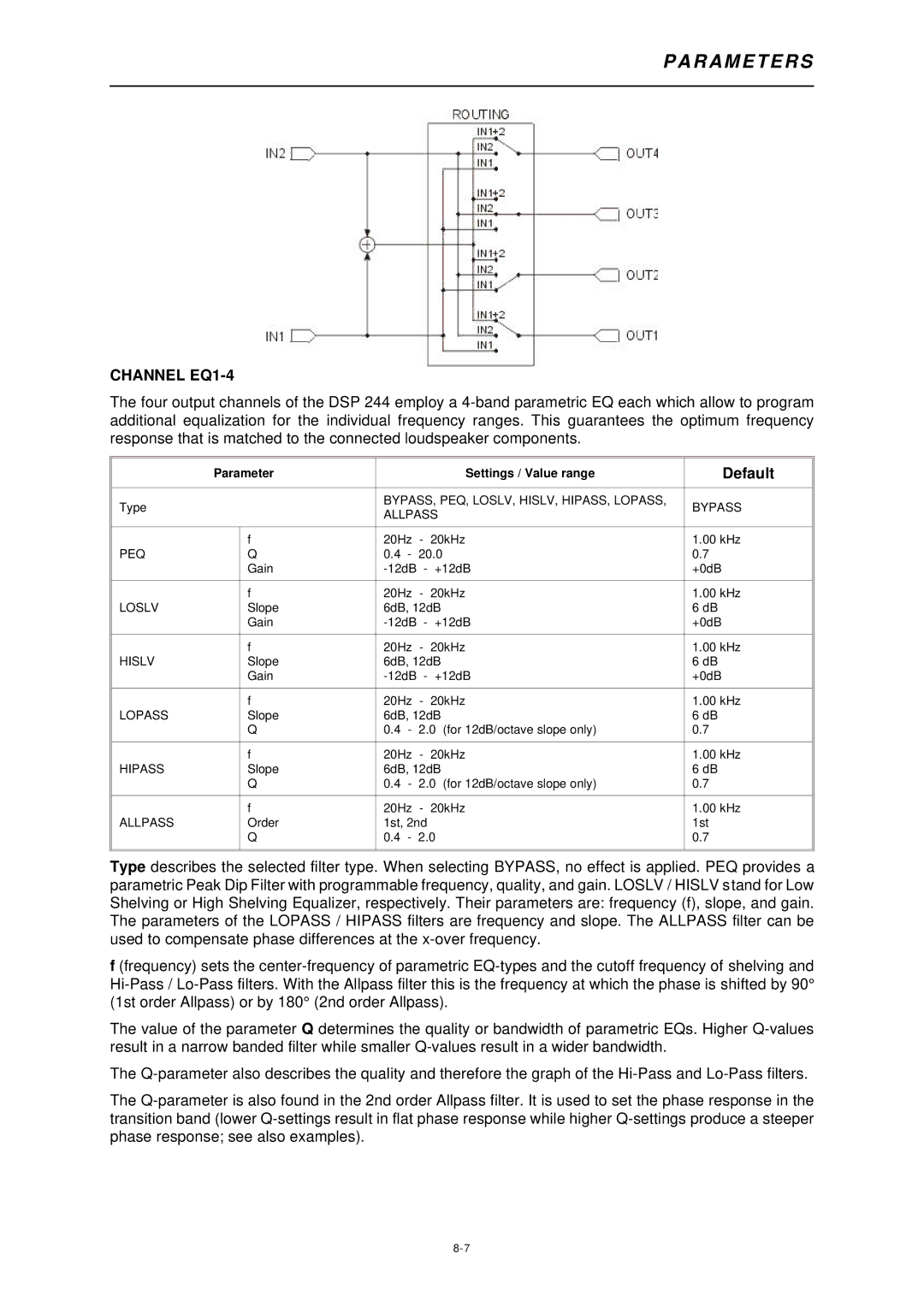
P A R A M E T E R S
CHANNEL EQ1-4
The four output channels of the DSP 244 employ a
| Parameter | Settings / Value range | Default | |
|
|
|
|
|
Type |
|
| BYPASS, PEQ, LOSLV, HISLV, HIPASS, LOPASS, | BYPASS |
|
| ALLPASS | ||
|
|
|
| |
|
|
|
|
|
|
| f | 20Hz - 20kHz | 1.00 kHz |
PEQ |
| Q | 0.4 - 20.0 | 0.7 |
|
| Gain | +0dB | |
|
|
|
|
|
|
| f | 20Hz - 20kHz | 1.00 kHz |
LOSLV |
| Slope | 6dB, 12dB | 6 dB |
|
| Gain | +0dB | |
|
|
|
|
|
|
| f | 20Hz - 20kHz | 1.00 kHz |
HISLV |
| Slope | 6dB, 12dB | 6 dB |
|
| Gain | +0dB | |
|
|
|
|
|
|
| f | 20Hz - 20kHz | 1.00 kHz |
LOPASS |
| Slope | 6dB, 12dB | 6 dB |
|
| Q | 0.4 - 2.0 (for 12dB/octave slope only) | 0.7 |
|
|
|
|
|
|
| f | 20Hz - 20kHz | 1.00 kHz |
HIPASS |
| Slope | 6dB, 12dB | 6 dB |
|
| Q | 0.4 - 2.0 (for 12dB/octave slope only) | 0.7 |
|
|
|
|
|
|
| f | 20Hz - 20kHz | 1.00 kHz |
ALLPASS |
| Order | 1st, 2nd | 1st |
|
| Q | 0.4 - 2.0 | 0.7 |
|
|
|
|
|
|
|
|
|
|
Type describes the selected filter type. When selecting BYPASS, no effect is applied. PEQ provides a parametric Peak Dip Filter with programmable frequency, quality, and gain. LOSLV / HISLV stand for Low Shelving or High Shelving Equalizer, respectively. Their parameters are: frequency (f), slope, and gain. The parameters of the LOPASS / HIPASS filters are frequency and slope. The ALLPASS filter can be used to compensate phase differences at the
f (frequency) sets the
The value of the parameter Q determines the quality or bandwidth of parametric EQs. Higher
The
The
